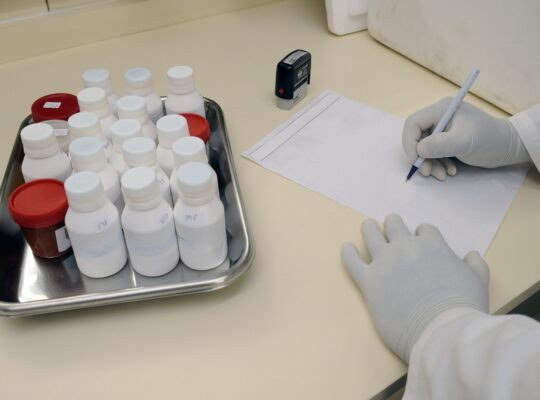Table of Contents
Pharm. D. 1st year Pharmaceutics Question Bank: Introduction to Dosage Forms, Prescription, Posology
SHORT ANSWERS (2 Marks)
1. Define dosage forms with examples.
2. Define unit and bulk dosage forms.
3. Define solid dosage forms with examples.
4. Define liquid dosage forms with examples.
5. Define semisolid dosage forms with examples.
6. Define tablets with examples.
7. Define capsule with examples.
8. Define pills with examples.
9. Define drops with examples.
10. Define jellies with examples.
11. Define creams with examples.
12. Define pastes with examples.
13. Define prescription.
14. What is the importance of prescription?
15. What is superscription?
16. Define inscription with example.
17. Define subscription with example.
18. What is meant by renewal instructions in prescription?
19. Enumerate the steps in handling of prescription.
20. Define posology.
21. Define doses and dosages.
22. Define tolerance with example.
23. Define idiosyncrasy with example.
24. Define hypersensitivity with example.
25. Define drug allergy with example.
26. Define tachyphylaxis with example.
27. Define synergism with example.
28. Define antagonism with example.
29. What is Fried’s rule?
30. What is Young’s rule?
31. What is Clark’s rule?
32. An infant, 15 months old and weighing 20 pounds, needs Streptomycin Sulfate, which is usually administered to adults as 1 gm (1000 mg), as a daily IM injection. What is the appropriate dosage for the infant as per Fried’s rule?
33. A child, 24 months old, needs acetaminophen, and the normal adult dose is 650 mg. What is the appropriate dosage for the child as per Fried’s rule?
34. An 18-month-old needs amikacin sulfate, and the normal adult dose is 250 mg. What is the appropriate dosage for the child as per Fried’s rule?
35. A child, 30 months old, needs erythromycin, and the normal adult dose is 250 mg QID. What is the appropriate dosage for the child as per Fried’s rule?
36. A 2-year-old child is prescribed amoxicillin, and the normal adult dose is 500 mg. What is the appropriate dosage for the child as per Young’s rule?
37. A 7-year-old needs propylthiouracil, and the normal adult daily dose is 150 mg. What is the appropriate dosage for the child as per Young’s rule?
38. A child, 10 years old, is prescribed Tavist® syrup, and the normal adult dose is 1.34 mg BID. What is the appropriate dosage for the child as per Young’s rule?
39. A child, weighing 85 pounds, is prescribed hydrochlorothiazide, and the normal adult dose is 50 mg. What is the appropriate dosage for the child as per Clark’s rule?
40. A child, weighing 70 pounds, is prescribed quinine sulfate, and the normal adult dose is 325 mg TID. What is the appropriate dosage for the child as per Clark’s rule?
41. A child, weighing 112 pounds, is prescribed Kaletra®, a protease inhibitor combination therapy. The normal adult dose is 400 mg lopinavir/100 mg ritonavir. What is the appropriate dosage for the child as per Clark’s rule?
42. Define drug.
43. Define pharmaceutical formulations.
44. Define additives with examples.
45. Justify the use of Latin language in the prescription.
46. What is the duty of the pharmacist in case of drug prescribed in overdose?
47. Name the drugs which are not to be prescribed at the time of lactation.
SHORT ESSAYS (5 Marks)
1. Define dosage forms. Write the classification table for the various types of dosage forms.
2. Define and classify solid dosage forms.
3. Define and classify liquid dosage forms.
4. Define and classify semisolid dosage forms.
5. Define prescription. Explain the parts of prescription.
6. Define prescription. Explain the handling of prescription.
7. Define posology. Enumerate four factors affecting selection of dose of a drug.
8. Explain any three factors affecting dose selection. Give any two formulae to calculate child dose.
9. Explain any three factors affecting dose selection. Give any two formulae to calculate infant dose.
10. Define posology. Explain any two formula for calculating child and infant dose.
11. Explain the importance of dosage form.
LONG ESSAYS (10 Marks)
1. Define dosage forms. Classify and explain various dosage forms.
2. Define and classify dosage forms. Write the definitions of solid dosage forms used internally and externally.
3. Define and classify dosage forms. Write the definitions of liquid dosage forms used internally and externally.
4. Define and classify dosage forms. Write the definitions of semisolid dosage forms used internally and externally.
5. Define prescription. With the help of an ideal example describe the importance of all the parts of a prescription.
6. Define prescription. Explain the handling of prescriptions. Write about the sources of errors in prescription.
7. Explain the factors affecting dose selection. Give any two formulae to calculate children’s dose.
8. Explain the factors affecting dose selection. Give any two formulae to calculate infant dose.
9. Define posology. Enumerate different factors affecting the selection of the dose of a drug.







